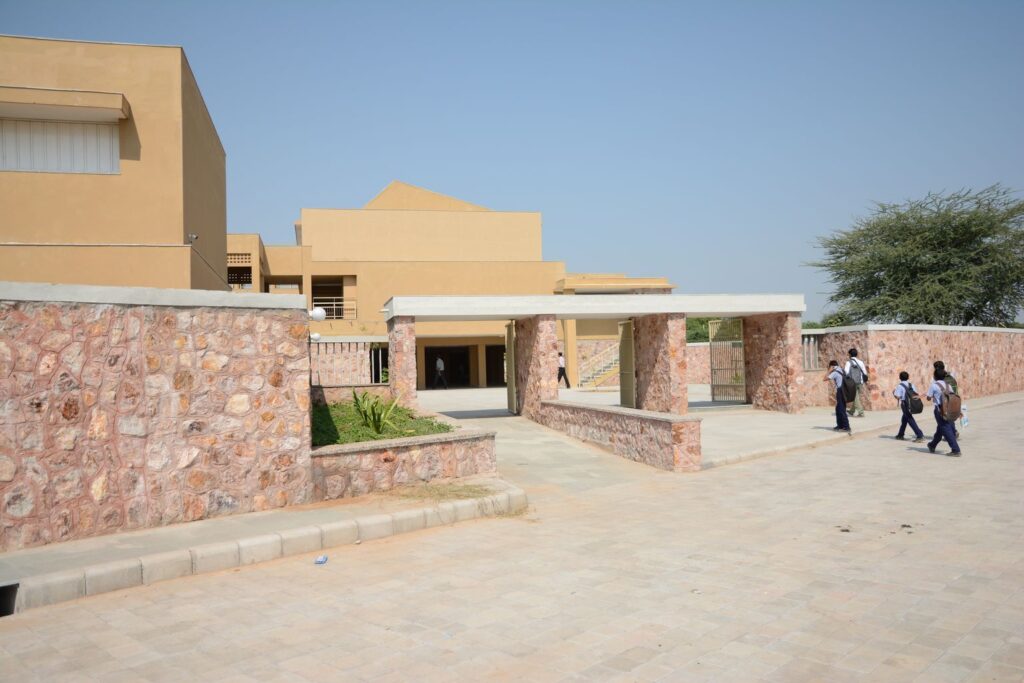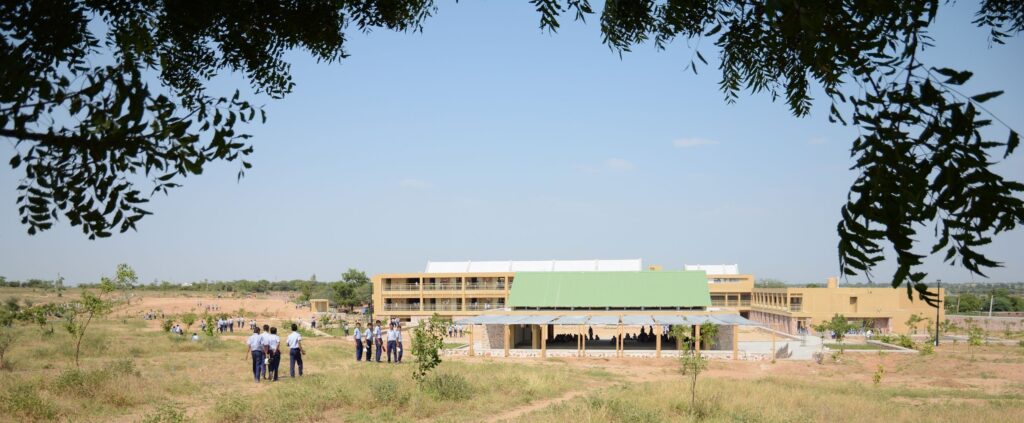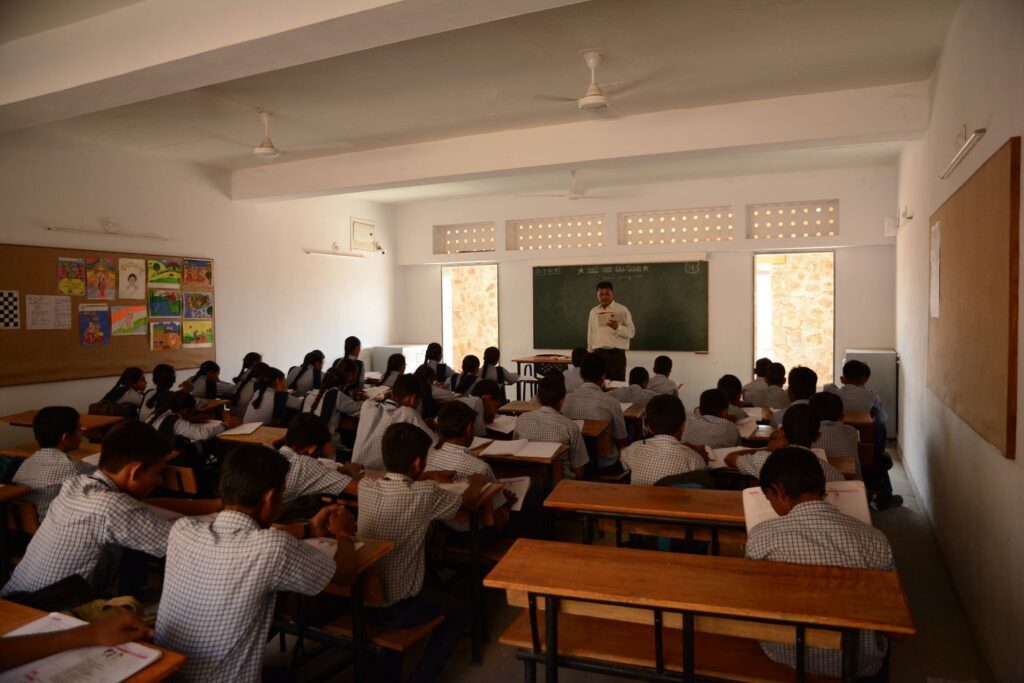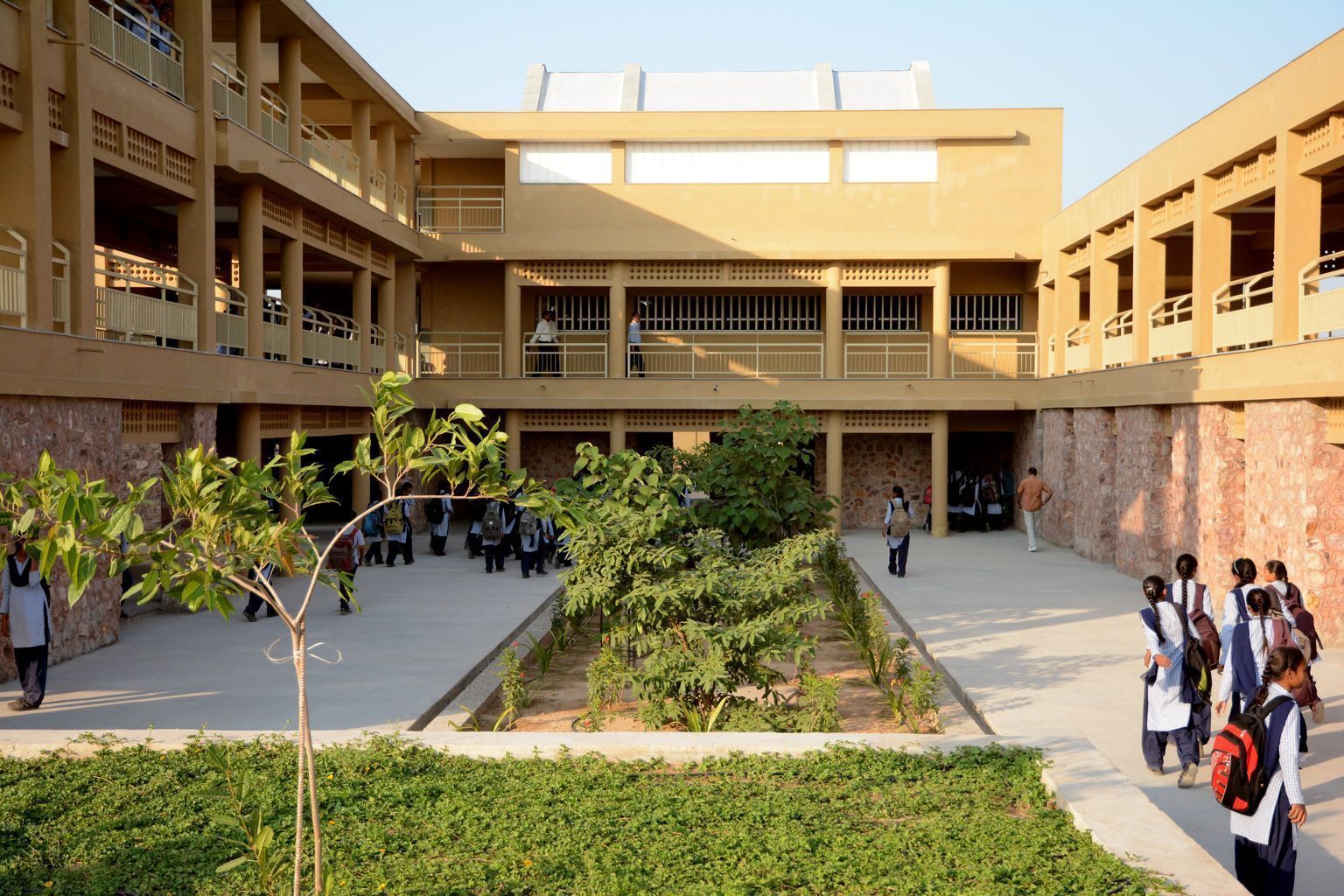Below, Aakrati Akar discusses the intricacies of the design of Shardashish School with Indigo Architects.

AA: The Process: A significant change from the conceptual sketches to the final drawings can be observed; could you shed some light on the design process?
IA: The initial proposal for the site was to include a KG to 12th-grade school. The eventual design included only high school children with a possibility for future additions. The plan addresses the realities of the terrain and the envisaged flows of water and breeze.


AA: Were there any gaps between the brief given to you by the client and the brief you came up with after studying the programme? Did the design brief also evolve over time?
IA: All briefs need to be interpreted to eliminate redundancies and build with an informed frugal approach. This was no exception and a new value was added to the program. Yes, the gaps had to be filled. For example, the library is approached from the main entrance by a stair into a space, which is used for after-school study. This was not part of the brief, but now is an important space for students to use after hours.
AA: Were there any challenges, in the project brief or the site, which became important considerations for the design?
IA: This was to be a school for the village of Chhapi. Well-appointed, resilient detailing was key. Several interactive sessions with the teachers and the patrons helped resolve and clarify the intent.
AA: What role did the curriculum play in the designing and planning process?
IA: We were excited to interact with the science teacher who resonated with our suggestions of engaging the children in the process of developing the plantation and the landscape over the years. Individual custodianship was given to students for taking care and nurturing the trees on campus while understanding the importance of biodiversity and native species.
AA: Conventionally, school buildings have a boundary wall to maintain the security and safety of students, but in your design the conventional boundary was not seen. How did you address security and safety concerns in the design?

While cost was a huge concern to build a compound wall on this terrain, our emphasis was to make a deep hedge with local thorny varieties of plants that could survive in drought and become effective wind fences over time. This also helped contain the erosion of the edges and allowed water to flow without any obstruction. Bor, Karbanda ( Christ’s thorn/ Black currant) and similar plants dot the entire perimeter of the school making a green defensive natural wall. There was a temporary barbed wire fence built which is now engulfed with this natural barrier. It also nurtures small birds and nesting which is vital for the ecosystem.
AA: Generally, the teachers’ room is placed to have a view of the students and shared/ common areas, was there a specific reason it has been avoided?
IA: Traditionally, the watchful eye of the teacher and headmaster over the students was seen as an important tool to discipline. We intentionally avoided this. The teachers surprisingly welcomed the move since it meant that they had a place to go to, away from the classroom.
The visual disconnect ensured the existence of independent realms within the learning environment. Policing can be counterproductive as the only means of discipline. This arrangement has worked.
AA: What was the criterion for the selection of materials? How does this choice affect the function of the building?
IA: Yellow sandstone was locally available not too far from the site and so was natural lime. This was the obvious choice for construction ensuring thermal comfort and resilience. Being a rural school, in a hot dry region with an unstable power supply, these choices were apt and effective. There is no use of glass in the entire building except in the lower-level staff room. The building is thermally stable ensuring comfortable conditions in winter and summer.

AA: The school building is home to diverse kinds of users, from learners to teachers to support staff. How does the planning address the needs of the diverse set of user groups?
Free and open access to all spaces, both enclosed and open, was ensured. Gender sensitivity and safety were important things to think about in order to avoid dead ends and places of refuge that didn’t stand out. This school prioritised universal accessibility for people with disabilities. There were no special toilets for teachers or the headmaster. Everyone used facilities meant for students. The female toilets were equipped with a sanitary disposal chute and a change room for use. This ensured a huge upswing in the attendance of female students in this school. The design ensured nonhierarchical and egalitarian spaces. Shaded service areas around and inside the main building made it possible for support staff and other tasks to be done in a dignified way.
Indigo Architects
AA: How does evolving education pedagogy or curriculum work with the building design? To elaborate, the future may see several changes in the curriculum / pedagogical methods, how does your design take this aspect into consideration?
IA: It is essential to design for flexibility and multiplicity of use. However, a sensible approach to building that acknowledges and demonstrates the fact that natural resources must be conserved is fundamental. Thermal comfort, good daylight and acoustics that work is vital. Integration of technological needs is a matter of detail.
AA: What were the important criteria for landscape design in enhancing the learning and teaching experience?
The most important message the landscape must convey is that nature being an integral part of our habitat. An engaging landscape nurtures sensitivity.
AA: Lastly, it has been 7 years since the completion of the project, is there anything you would like to relook at after seeing the functioning of the school?
IA: Better vandal-proof products for toilets and water-related infrastructure are needed. The fittings and vessels available on the market are not vandal-proof. We also need to teach students how to respect and take care of their schools and all of their facilities.

Details of the Shardashish School are on the link below:









One Response